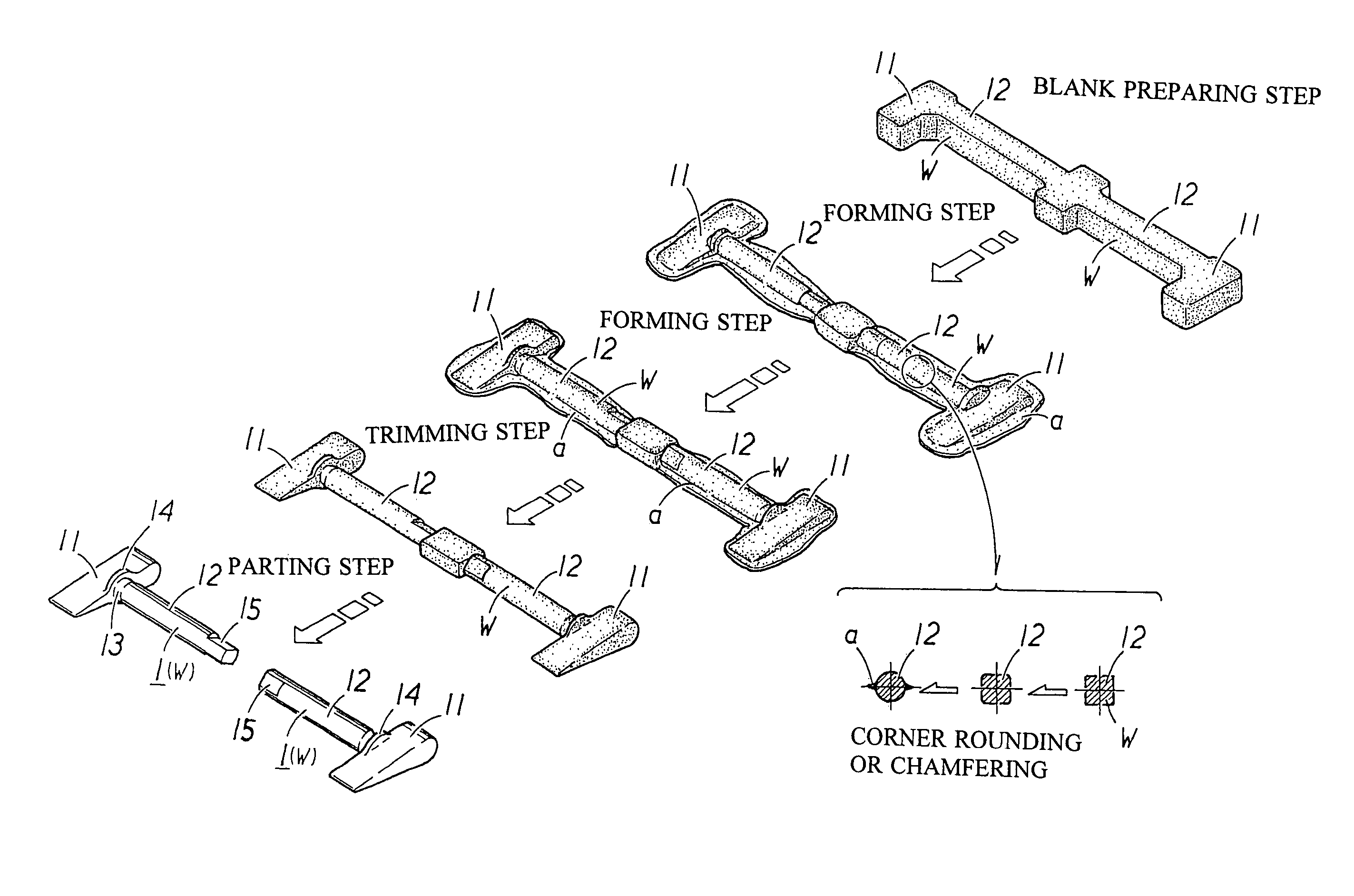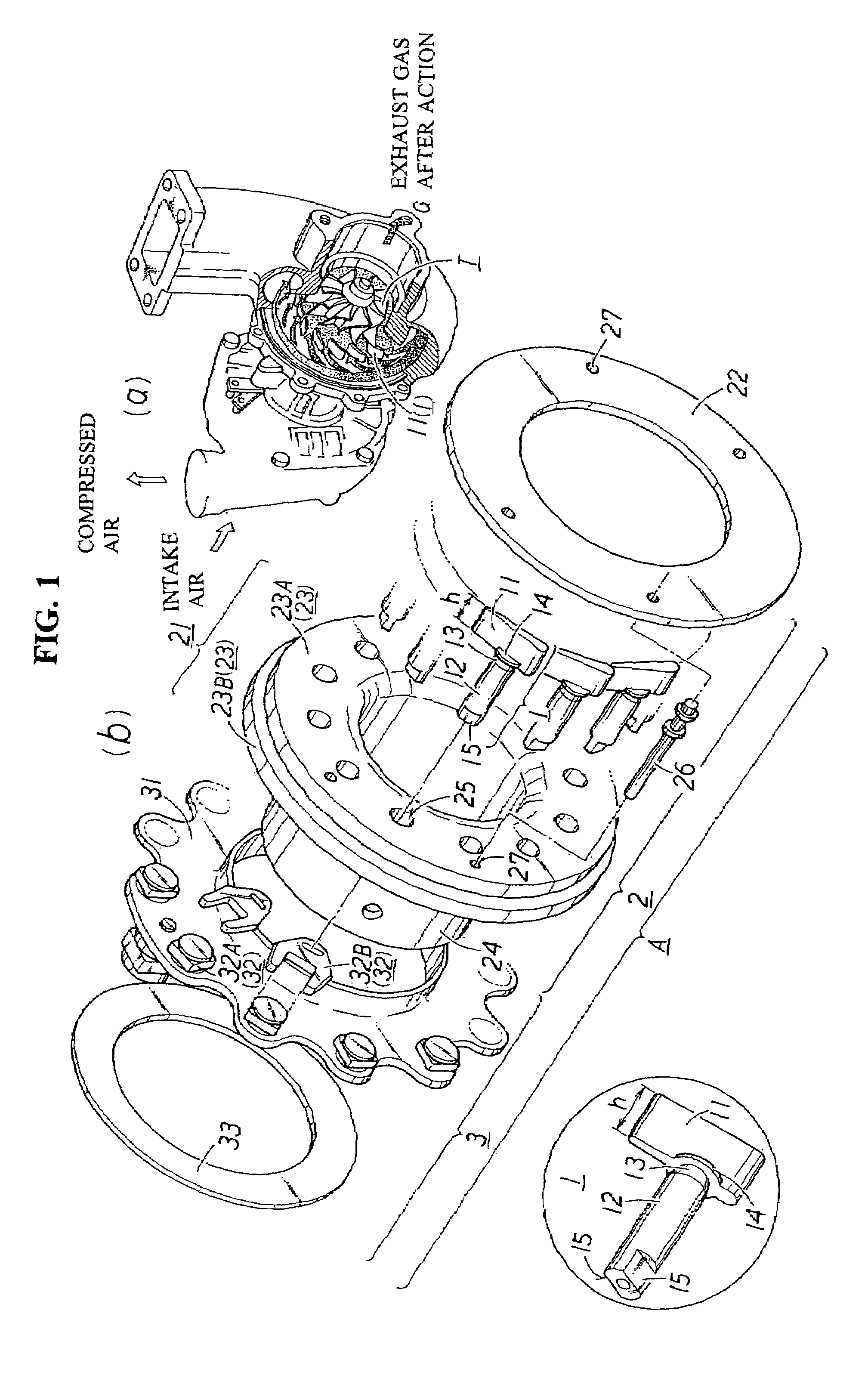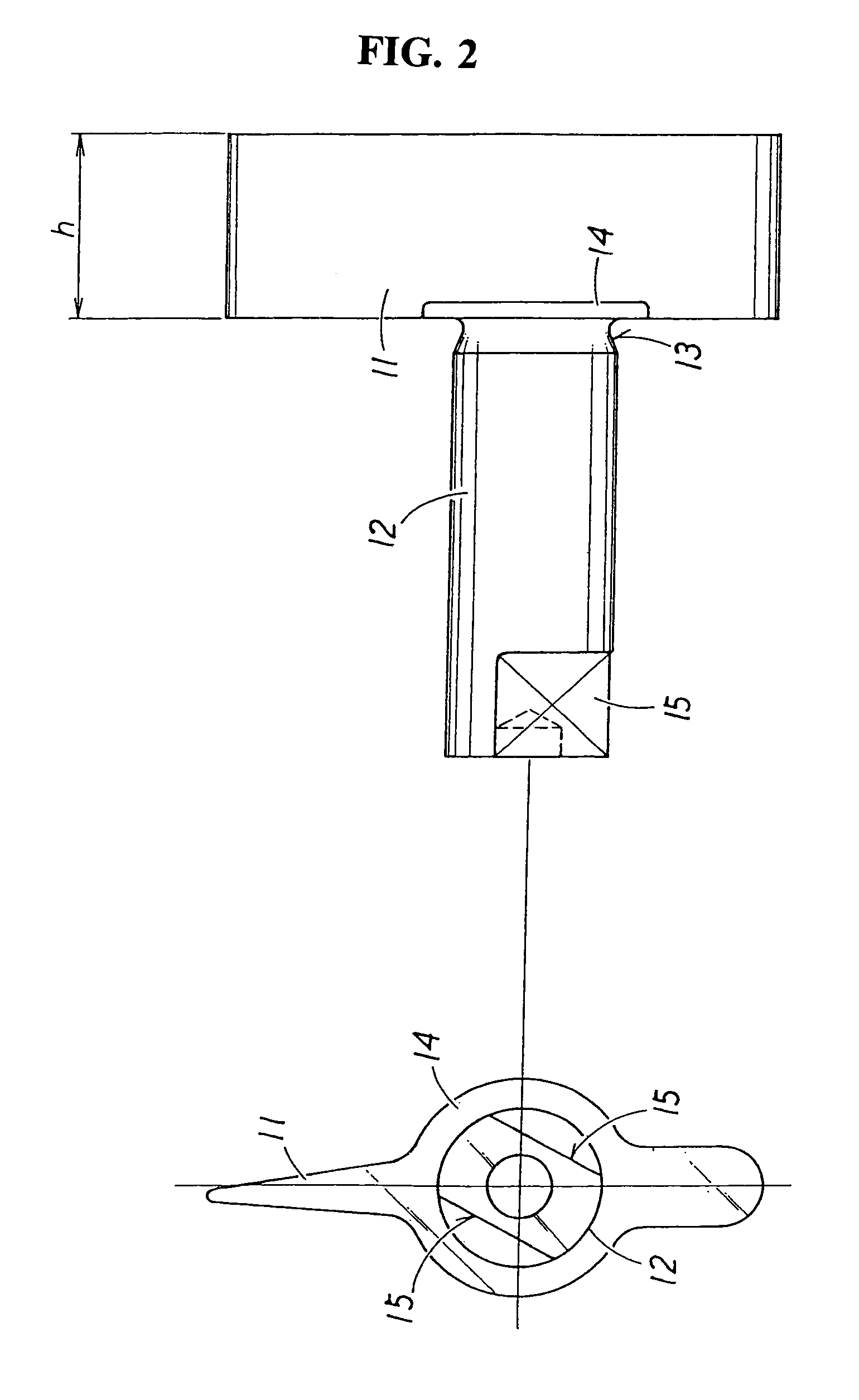Variable blade manufacturing method and variable blade in VGS type turbo charger
a manufacturing method and turbo charger technology, applied in the field of vgs turbochargers, can solve the problems of difficult to produce an effect of the turbocharger, the turbocharger hardly functions, and the engine cannot avoid giving a slow-moving feeling, etc., to achieve accurate and secure regulation of the flow rate of exhaust gas, high heat resistance, and high accuracy
- Summary
- Abstract
- Description
- Claims
- Application Information
AI Technical Summary
Benefits of technology
Problems solved by technology
Method used
Image
Examples
embodiment 1
(1) Embodiment 1
(i) Preparing Step of Shaped Material (Blank)
[0054]This step is a step of preparing the metal shaped material W which is integrally provided with the blade portion forming section 11a and the shaft portion forming section 12a, and which is a starting form for the adjustable blade 1. In this embodiment, the shaped material W is constituted by the blank punched out from the metal material having an approximately constant thickness, for example, by fine blanking (which is known as a precise punching method, and is hereinafter abbreviated as FB). Of course, the blank (shaped material W) is punched out so as to have a volume capable of achieving the aimed at adjustable blade 1. In this case, the punching step is preferably constructed so that a plurality of blanks are obtained with one punching operation. For example, in a mode shown in FIG. 4 illustrating a shape of a blank member, the blank member which includes two pieces for the blanks is obtained from band steel havi...
embodiment 2
(2) Embodiment 2
[0067]The second embodiment is substantially the same as the first embodiment in the work itself, however, it is characterized by heating the shaped material W and the like mainly at the time of performing the forming work. Accordingly, a description will be given mainly of this point
[0068]At the time of the forming work, in this embodiment, either one or both of the raw material (shaped material W) and the opposed dies is heated to 50 to 300° C. in accordance with an Md30 value which is a strain induced martensitic transformation index of the shaped material W. Herein, the term “Md30”, which is typical of austenitic (stainless steel) materials, denotes the temperature at which 50 vol % of an austenitic phase transforms into a ferromagnetic high-strength martensitic phase, when uniaxial tensile stress true strain is imparted to a raw austenite plate, and which indicates that the higher the value, the likelier the raw material is to change into martensite. Md30 is the...
embodiment 3
(3) Embodiment 3
(i) Preparing Step of Shaped Material
[0074]This step is a step of preparing the metal shaped material W serving as a starting form for the adjustable blade 1 in a similar manner to that in the first and second embodiments mentioned above. To form the shaped material W, it is possible to apply an appropriate technique such as precision casting, metal injection molding, punching out of a blank or the like, and a description will be given in summary of each of the techniques.
[0075]For example, a lost wax method representing the precision casting is a method of reproducing an aimed at product (the adjustable blade 1 in this case) approximately faithfully in both of a shape and a size by a wax model, coating a periphery of the wax model with a refractory material, thereafter melting the wax portion therein so as to obtain only the refractory material (the coating material), and casting by using this as a casting mold. As mentioned above, in accordance...
PUM
| Property | Measurement | Unit |
|---|---|---|
| Temperature | aaaaa | aaaaa |
| Temperature | aaaaa | aaaaa |
| Thickness | aaaaa | aaaaa |
Abstract
Description
Claims
Application Information
 Login to View More
Login to View More - R&D
- Intellectual Property
- Life Sciences
- Materials
- Tech Scout
- Unparalleled Data Quality
- Higher Quality Content
- 60% Fewer Hallucinations
Browse by: Latest US Patents, China's latest patents, Technical Efficacy Thesaurus, Application Domain, Technology Topic, Popular Technical Reports.
© 2025 PatSnap. All rights reserved.Legal|Privacy policy|Modern Slavery Act Transparency Statement|Sitemap|About US| Contact US: help@patsnap.com



